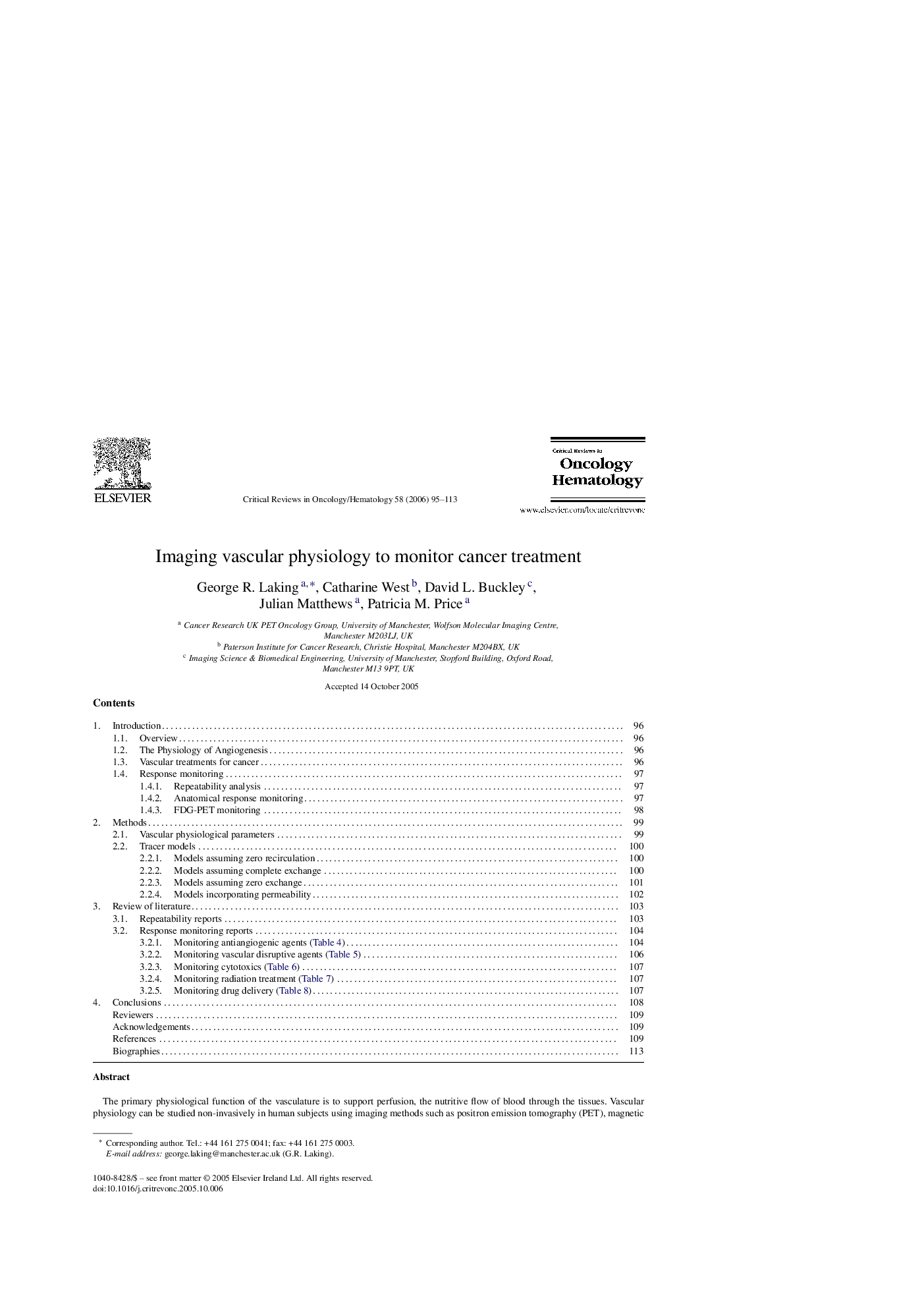| Article ID | Journal | Published Year | Pages | File Type |
|---|---|---|---|---|
| 3330382 | Critical Reviews in Oncology/Hematology | 2006 | 19 Pages |
The primary physiological function of the vasculature is to support perfusion, the nutritive flow of blood through the tissues. Vascular physiology can be studied non-invasively in human subjects using imaging methods such as positron emission tomography (PET), magnetic resonance imaging (MRI), X-ray computed tomography (CT), and Doppler ultrasound (DU). We describe the physiological rationale for imaging vascular physiology with these methods. We review the published data on repeatability. We review the literature on ‘before-and-after’ studies using these methods to monitor response to treatment in human subjects, in five broad clinical settings: (1) antiangiogenic agents, (2) vascular disruptive agents, (3) conventional cytotoxic drugs, (4) radiation treatment, and (5) agents affecting drug delivery. We argue that imaging of vascular physiology offers an attractive ‘functional endpoint’ for clinical trials of anticancer treatment. More conventional measures of tumour response, such as size criteria and the uptake of fluorodeoxyglucose, may be insensitive to therapeutically important changes in vascular function.
